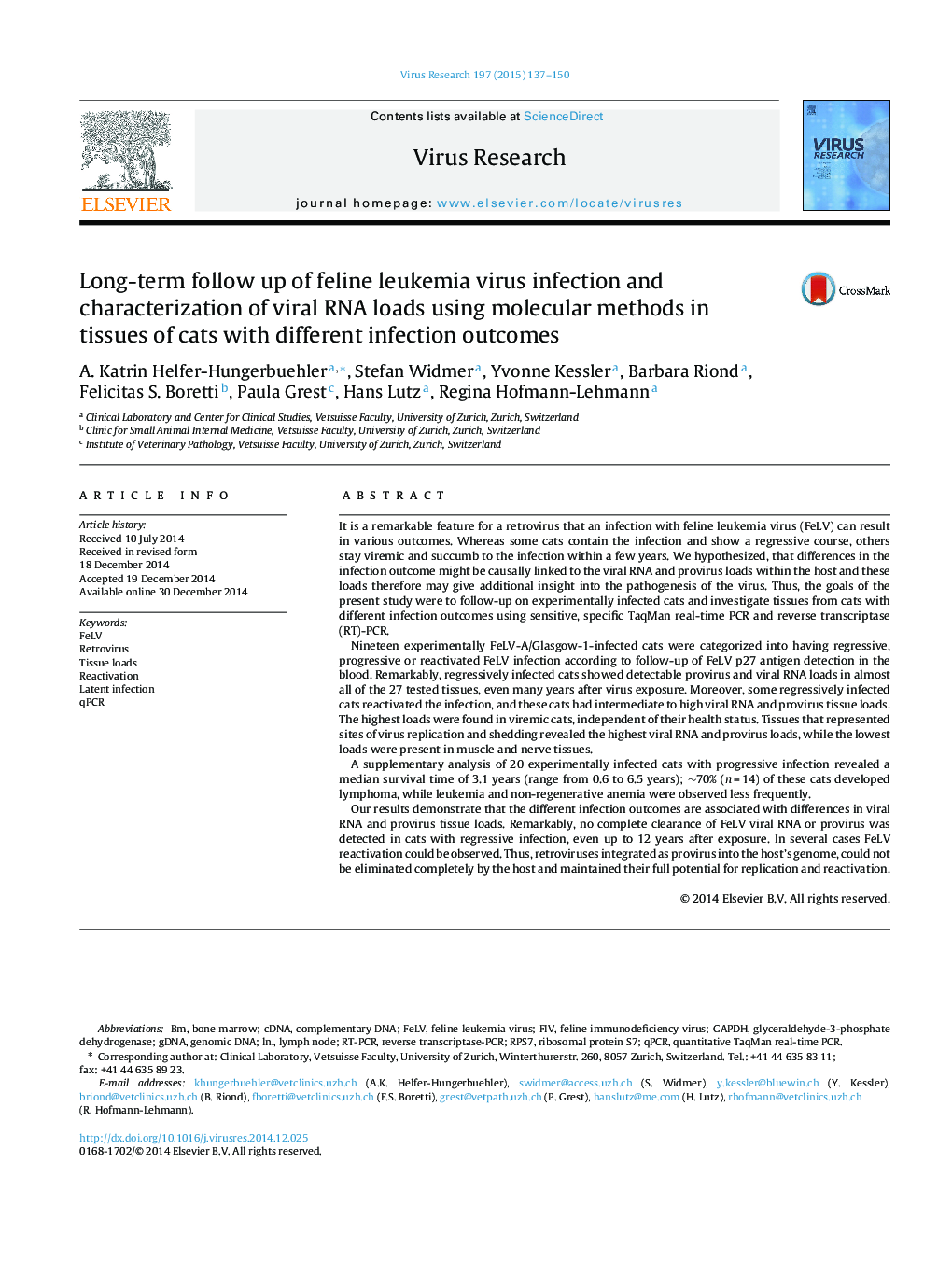| Article ID | Journal | Published Year | Pages | File Type |
|---|---|---|---|---|
| 3428309 | Virus Research | 2015 | 14 Pages |
•FeLV infection outcome is associated with viral RNA and provirus tissue loads.•Highest loads found at sites of virus replication and shedding.•Persistence of viral RNA in tissues of regressively infected cats for many years.•Importance of regressively infected cats: potential for reactivation of infection.•3.1 years median survival time in progressively FeLV-infected cats.
It is a remarkable feature for a retrovirus that an infection with feline leukemia virus (FeLV) can result in various outcomes. Whereas some cats contain the infection and show a regressive course, others stay viremic and succumb to the infection within a few years. We hypothesized, that differences in the infection outcome might be causally linked to the viral RNA and provirus loads within the host and these loads therefore may give additional insight into the pathogenesis of the virus. Thus, the goals of the present study were to follow-up on experimentally infected cats and investigate tissues from cats with different infection outcomes using sensitive, specific TaqMan real-time PCR and reverse transcriptase (RT)-PCR.Nineteen experimentally FeLV-A/Glasgow-1-infected cats were categorized into having regressive, progressive or reactivated FeLV infection according to follow-up of FeLV p27 antigen detection in the blood. Remarkably, regressively infected cats showed detectable provirus and viral RNA loads in almost all of the 27 tested tissues, even many years after virus exposure. Moreover, some regressively infected cats reactivated the infection, and these cats had intermediate to high viral RNA and provirus tissue loads. The highest loads were found in viremic cats, independent of their health status. Tissues that represented sites of virus replication and shedding revealed the highest viral RNA and provirus loads, while the lowest loads were present in muscle and nerve tissues.A supplementary analysis of 20 experimentally infected cats with progressive infection revealed a median survival time of 3.1 years (range from 0.6 to 6.5 years); ∼70% (n = 14) of these cats developed lymphoma, while leukemia and non-regenerative anemia were observed less frequently.Our results demonstrate that the different infection outcomes are associated with differences in viral RNA and provirus tissue loads. Remarkably, no complete clearance of FeLV viral RNA or provirus was detected in cats with regressive infection, even up to 12 years after exposure. In several cases FeLV reactivation could be observed. Thus, retroviruses integrated as provirus into the host's genome, could not be eliminated completely by the host and maintained their full potential for replication and reactivation.
